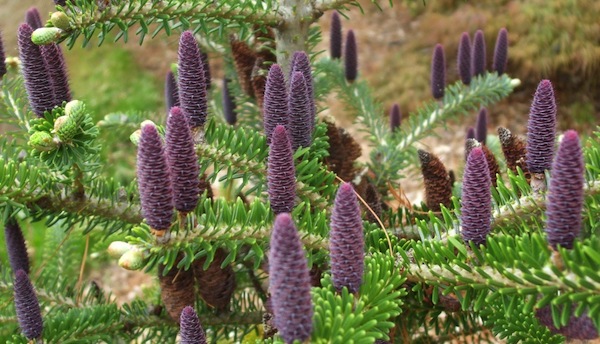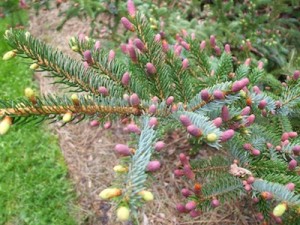Tucked in the Irish Hills region of southeastern Michigan is Hidden Lake Gardens, a mecca for Midwesterners interested in conifers, in Tipton, Mich.
Planted throughout the 750 acres are pine, spruce, fir, false cypress and juniper trees and shrubs in settings that give gardeners a good idea of what these plants look like as mature specimens in the landscape.
Most of us buy small evergreens in pots and have no idea how big they will get. Mugo pine, for instance, is marketed as a dwarf plant, but it can get six feet tall and wide within a few years.
We may buy a cone-bearing plant because it is evergreen, but there are other attributes the discriminating gardener may want to consider.
Depending on the species, the cones can be the common brown, or they can take on distinct blue, red or yellow hues in spring. Think of a gorgeous evergreen filled with dots of color on upward or downward facing cones. There are male and female cones, too, and as they ripen they release their pollen, turn brown and form seeds deep inside.
Spring also sparks new growth on conifers just like the season does on other plants in the garden. The new growth on the tips of conifer branches is usually a brighter, contrasting color and the needles are usually soft and pliable.
Among the tips gleaned on a recent visit to Hidden Lake Gardens is to plant conifers in spring. “They don’t put roots out in fall,” said Steve Courtney, manager of the gardens in Tipton, Mich. Even healthy plants growing in containers may struggle to get established when planted in fall, he said.
Hidden Lake Gardens, which is part of Michigan State University, also features several beautiful hosta gardens and a conservatory. It’s about a four-hour drive from Indianapolis.


I wish I’d been able to go to this nursery. Sounds like a fascinating collection.